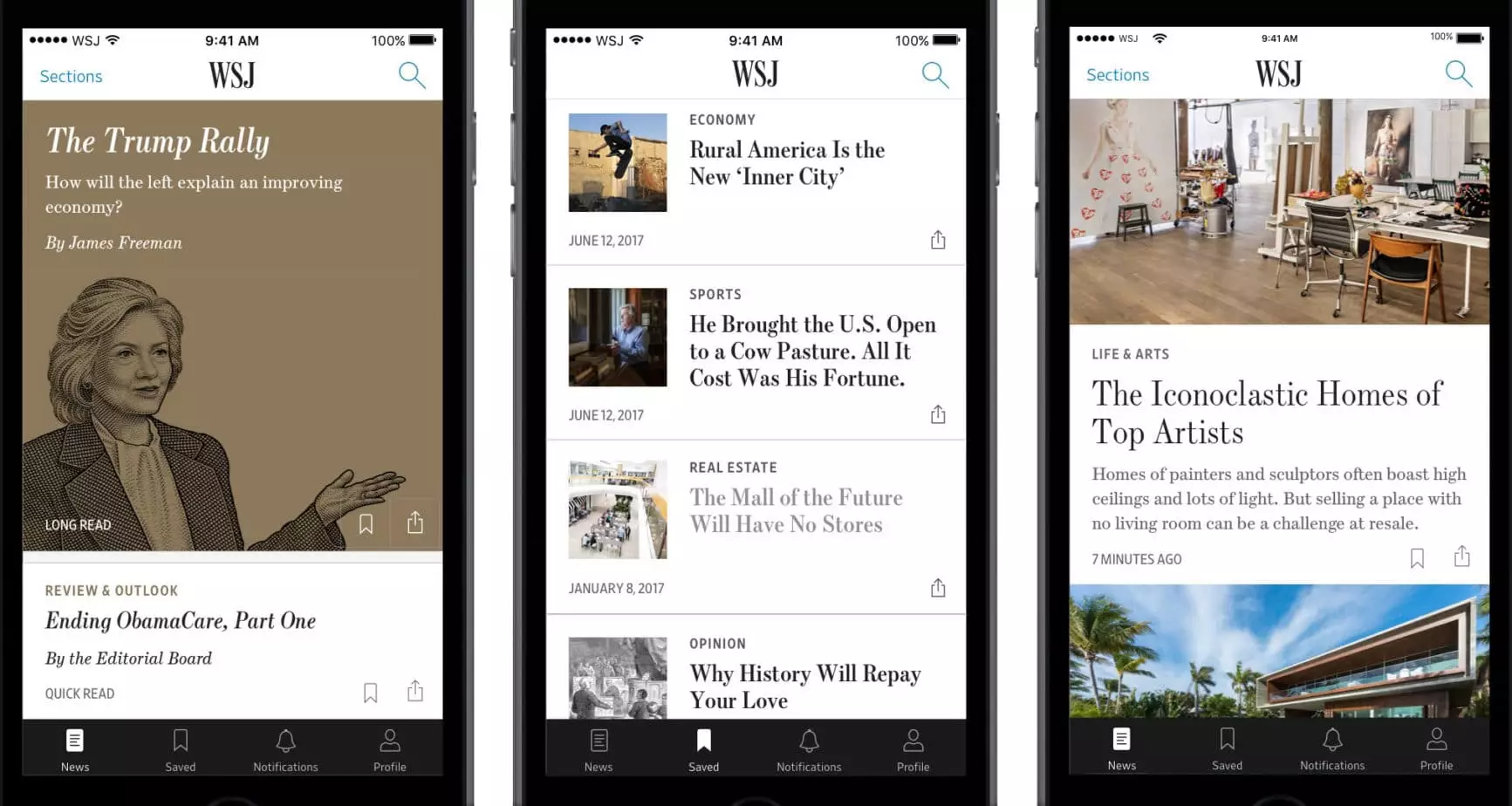The Guardian US has recently concluded their 2 year Mobile Innovation Lab study, which received $2 million in funding from the night foundation. WSJ has been a participant in this study testing new story formats in partnership with The Guardian. As the senior mobile editor, much of Hite’s time was focused on managing The Wall Street Journal’s mobile app. Simon Owens spoke with Brittany where he recaps her background, experience, WSJ’s strategy to mobile journalism (past, present & future) and their results to date.
**Editors note – Apologies for the patchy quality of this podcast, the connection at my location was a result of this. Regards, Vahe.
In March, The Wall Street Journal published an article titled “What’s the Biggest Trade on the New York Stock Exchange? The Last One.” It detailed why, despite the New York Stock Exchange operating between 9:30 a.m. and 4 p.m., the vast majority of trades are conducted in the final moments right before the markets close.

Hite was one of two editors who lead the mobile team of about 14 staffers, a job she fell into almost by accident. After college, she had taken a role as a news assistant at the Journal’s foreign desk, and it was while working there that she came to realize that nearly everyone senior to her had, at some point, worked overseas. It occurred to her that if she wanted to advance in this field, she would need to do the same. So when the option came to leave the Journal for a job at a company in Beijing, she took it.
She was at the company for only a year before an opportunity presented itself to rejoin the WSJ. “The Journal was hiring digital editors in Hong Kong to build out our sort of real-time publishing desk where they would start publishing 24 hours a day, seven days a week,” Hite said. “I was able to come back to the Journal by sheer luck of being in the right place at the right time because I was already living in Asia.” She started out helping run the Journal’s presence on WeChat, which is the most popular messaging app in China. She continued to work on various mobile products until October 2016, when she was promoted to help run the entire team.
As a senior mobile editor, much of Hite’s time was focused on managing the Journal’s mobile app. I asked her about the balance struck between the app versus the newspaper’s mobile website, especially given studies showing that not only do smartphone users download very few apps, but they also hardly open the apps they have downloaded. She argued that, while some publications might not think it’s worth it to operate their own apps, the Journal is different because of its paywall. “Being a subscription product, we have a dedicated user base that is coming to our app and paying for it,” she said. “We have to balance that with the web and people coming to us sideways from social and other channels, but I do think that, because we have such a hard paywall, we have a different perspective than other news organizations.”
Other publishers might not see the same kind of ROI with their mobile apps, Hite said, especially those that don’t rely on paid subscriptions. “I do think it is something people are paying attention to: do you really need an app and are there ways to publish without one? … If you are a free, ad-supported publisher, these are the tough questions you have to ask. Because keeping an app requires a lot of resources, a lot of testing, and if people are just going to read it on the web anyway,” then is it really worth it?
A significant portion of the mobile team’s efforts is centered on push alerts. Hite said her staff spent a lot of time on Slack workshopping the copy for the alerts. There are nine different categories a WSJ app user can express interest in, and this helps dictate what kind of alerts they see.
And how did they decide what news warrants a push alert? “Obviously there’s news value, and we want to send out anything that’s big, breaking news that’s important to our readers,” said Hite. “It’s also about balance — maybe not something that’s breaking news but that we think is important, that our readers will care about anyway.” She gave the example of a tech columnist’s review of the latest iPhone. “It isn’t breaking news, but something our tech audience will be very interested in, and we want to push to them and make sure they’re aware we have this kind of stuff.”
The mobile staff had been extremely cognizant of push alert fatigue, and that inundating users with too many irrelevant alerts could result in them turning the feature off entirely. At the same time, there is evidence that users have become more tolerant of the practice. At a recent ONA conference, Hite spoke to someone who worked at a third party push alert platform. “They found the threshold for how many push alerts people will accept has risen,” she recalled. “Back in the day when we first got our iPhones you would have died if you got 10 alerts a day from The Wall Street Journal, but nowadays I guess people are more accustomed to it because they’re also getting 10 alerts from Yelp, 15 from Gmail, and a few from Twitter. It’s a stream that never ends.”
I asked Hite what kind of data she consults to monitor the success of push alerts. The main metric, she explained, is open rates, but you can’t always rely on them when assessing the success of an alert. “A lot of times, especially with breaking news, you get the alert, you look at the alert, and you’ve got everything you’ve needed, but you don’t necessarily need to tap it to open the story,” she said. “… Just because something doesn’t have a high open rate doesn’t necessarily mean that it is a failure.” Feature and enterprise stories, on the other hand, contain the most important information within the story itself, meaning the push alerts for these kinds of articles should result in a user opening the app.
The Journal is constantly experimenting with ways to leverage push alerts and has even teamed up with other news organizations to test out new features. It worked closely with the Guardian Mobile Journalism Lab, for instance, to develop a tool for live mobile push alerts, utilizing it in reporting on the Bureau of Labor Statistics’ monthly jobs report. News organizations often rush to dissect the report in real time, and the WSJ app would alert readers to new updates to the coverage while they were reading it, allowing them to either jump to the newer updates or ignore the alert and keep reading.
Content from our partners
Of course, not all of the mobile team’s time is spent on the app. The Journal had heavily invested in several mobile platforms ranging from Instagram to Snapchat. Lately, Hite had placed a lot of her attention on Apple News, which has recently become a significant traffic driver for publishers. “It’s a huge audience on Apple News,” she said. “So we’d try figuring that out; how does that work with our subscriber audience? Do you do things the same, do you tailor them, do you do things differently? What does the Apple News audience want from The Wall Street Journal, and how do we really get our brand across to them and show them the things we’re most strong in — business, politics, finance?”
Being such an august institution, The Wall Street Journal has access to some of the smartest minds on both the editorial and tech side, and the mobile team leverages this expertise to constantly innovate with its product. But that’s not to say its staff doesn’t get ideas from outside sources. “I have 30 news apps on my phone because I have to keep up with the competition and see what others are doing,” said Hite. “You never know where you’ll find ideas or inspiration. It’s not necessarily just from news apps, but any sort of new technology people are creating.”
Note: All images have been provided by The Wall Street Journal













